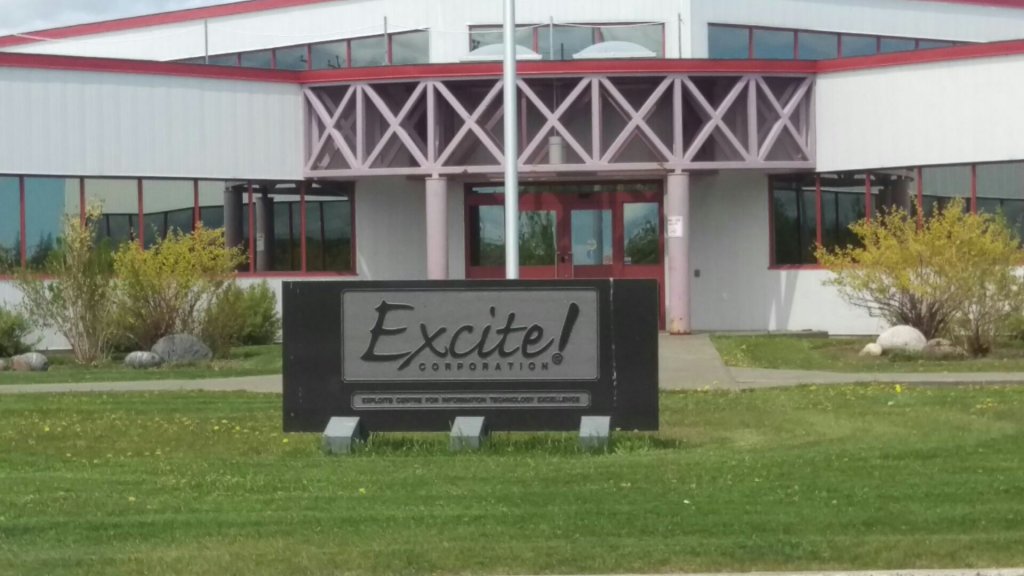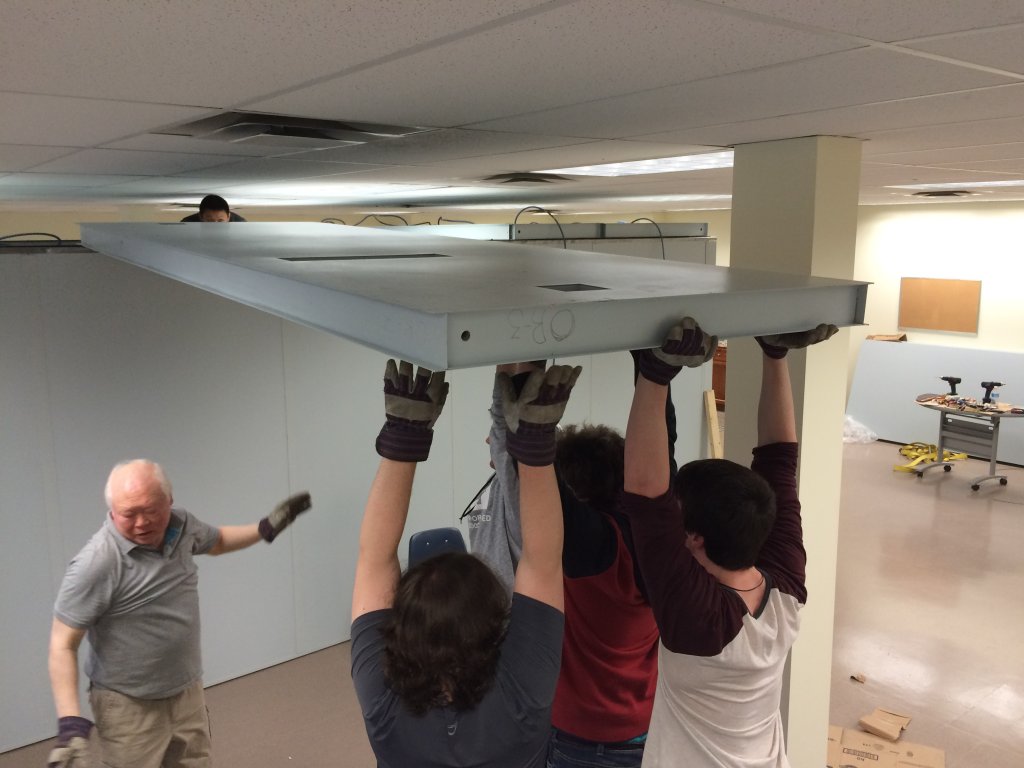Genomic Hearing Research and Development in Newfoundland

The Faculty of Medicine at Memorial University, in collaboration with the Town of Grand Falls-Windsor, has recently established a new Centre for Genomics-Based Research and Development in Hearing Science in the province of Newfoundland and Labrador. The mission of the centre is to facilitate discovery, innovation and knowledge translation, with a focus on the genomic determinants of auditory dysfunction. This community based laboratory for human auditory research has been equipped for operation through a successful team application to the Atlantic Canada Opportunities Agency (ACOA). Key partnerships include the Translational and Personalized Medicine Initiative (TPMI) at MUN, the Government of Newfoundland and Labrador, researchers from Western and McMaster Universities and provincial health authorities, especially Eastern and Central Health. The team has received operational funding from Hearing Foundation of Canada, the Canadian Institutes of Health Research, Genome Canada, and the Research and Development Corporation of Newfoundland and Labrador. The overarching goal of the new centre is to significantly contribute to new understanding of the auditory pathway, in order to develop new solutions for hearing loss.
Background
Over the past 15 years, a medical research team under the direction of Dr. Terry Lynn Young, a molecular geneticist and director of genomics research, has been identifying genes responsible for hearing loss in the founder population of Newfoundland and Labrador, one of the world’s rare and valuable resources for genetic studies. Large families and a culturally strong identification with family roots in specific areas of the province provide a rich opportunity for the study of inherited conditions.
Discovery of hearing loss genes provides exciting opportunities for knowledge translation. Dr. Young has never been satisfied to limit her work to discovery. Young states: “I want to know that the results of our research make a difference to the families affected – to turn discovery into practical solutions which can improve outcome for people.” Anne Griffin, clinical audiologist, began working with Young in 1999, and was subsequently hired as the team’s research audiologist. Griffin says: “As I gained experience as a new audiologist, it became increasingly apparent to me that the effectiveness of rehabilitation strategies was highly variable between individuals and families, and that cause and effect of most hearing loss were only vaguely understood. This was a disturbing revelation, and I set a career goal to find some way to contribute to better understanding and solutions for hearing loss.”
Discovery Research to Knowledge Translation
Our Research Team
Finding the right partners and resources to translate gene discovery into practical knowledge is essential to these ambitions. Dr. Sue Stanton, professor of audiology and hearing science at Western University and the National Centre for Audiology, joined the team in 2008 as a key collaborator and has been contributing her expertise to gene discovery work and to understanding how newly identified gene mutations affect human hearing. She sees exciting potential to advance knowledge of the auditory pathway and its vulnerabilities which cause auditory dysfunction through detailed audiologic assessment of cohorts whose auditory deficits are due to a common genetic factor. As co-principal investigator she has identified translational projects and infrastructure required to establish a laboratory for human auditory research. Recently, Dr. Ian Bruce, associate professor in electrical and computer engineering and head of the Auditory Engineering Lab at McMaster University, has joined the team as collaborator with expertise in computer modelling of the auditory system, and is working with Dr. Stanton to develop assessment protocols for identification and mapping of auditory deficits. The research efforts and expertise of a cadre of graduate and post-doctoral trainees enable the team to fulfill its research goals.
A key priority for the team is to ensure discovery of genetic cause is shared with the family, through individual and family counselling. Following clinical genetic testing to confirm individual mutation status, results and information on inheritance and risk are provided by our genetic counsellor, Sarah Predham, who joined the team in 2015. The team provides a unique opportunity for the clinical audiologist and genetic counsellor to combine expertise and provide integrated knowledge and advice for improved identification and management of hearing loss. The genetic counsellor also has a key role in ascertaining family participants for the research. Information on the family tree, which family members provide informally or by reference to personal records of family history, is used by the genetic counsellor to create the pedigree. This single concise document uses standardized graphic notation, symbols and notes to show details on multiple generations of affected branches of the extended family in precise relationship.
Community-Based Research
Our research success depends on the recruitment and ongoing participation of family members. Families with hearing loss participating in our research are based in communities throughout the province of Newfoundland and Labrador, and include numerous blood relatives in other provinces and countries. Our strength as a team in ascertaining 150+ participating families is greatly enhanced by strong community connections developed over the past 18 years of work with hearing loss families, including relationships with audiologists, otolaryngologists, hearing instrument specialists, and other clinical providers.

The Excite Building - home to the research site.
Strong community connections also led to a unique opportunity to establish a community based research centre in central Newfoundland. The Town of Grand Falls-Windsor implements their knowledge-based economic development strategy through the town’s “Excite Corporation.” Stan Singh, executive director, realized our research ambitions perfectly align with their focus on innovation in healthcare and life science. Partnership with the town of Grand Falls-Windsor has provided the team with opportunities to access new sources of funding, space for the new research centre, and generated widespread community support. Barry Manuel, current mayor and Excite chair, says “We see this as a gateway initiative, providing essential community capacity for the team’s research goals, for future commercial applications and for the provision of education to end users.” The site has been equipped with a sound booth (double walled both rooms) and equipment designed for clinical practice, but which also allows manipulation of parameters for non-standard research protocols, and data upload for research analytics. The research centre also functions as a community based resource for consultation and education, ascertainment of families to discovery and translation research, and enhanced collaborative relationships with professional and community stakeholders.
Newfoundland’s Founder Population: An Important Resource for Research
Most genetic variants found in Newfoundland were imported here by early Northern European founders (mainly English and Irish) and became amplified through natural expansion (large family size) and low immigration after the 1600s. In the early 2000s, Dr. Young initiated a province-wide ascertainment effort for hearing gene discovery and over 150 families have been have been ascertained so far, including a substantial number with deep genealogies, with multiple affected members across several generations. Ascertainment is sometimes targeted to specific projects with the help of clinical providers, for example, to search for familial otosclerosis. The first member of a family with hearing loss to join the study is identified as the proband, and as the pedigree is developed, family relationships are referenced to this person. The pedigree can grow exponentially when multiple family members provide information. Very large pedigrees link distantly related families in a clan of multiple families who are mostly unaware of their relationship to each other. Given the interesting founding of the population, shared surnames often provide clues to expansive family trees.
Working with Founder Population Families
When our research is perceived as a mutually beneficial exchange, relationships with families evolve into true partnerships in which researchers and subjects acknowledge and contribute to shared goals, including identification of genetic cause, increasing knowledge of hearing mechanisms, and new solutions for hearing loss. Family members provide blood or saliva for DNA investigation, family history, and permission to access medical and audiological information. Many also voluntarily promote the research within the family, recruit participants, and investigate family tree information for the pedigree. While we cannot promise research participants that they will receive benefit from the research, we can provide clinical counselling on hearing loss, and help to access hearing technology and community services when needed. Acting on opportunities to give as well as receive benefit builds relationships of respect and trust, invaluable to sustained long term involvement of families and their members.
The gene discovery arm of the research attempts to identify the shared genetic changes, the “genotype” which is the specific gene and mutation that is causing the hearing loss. The characteristic effects on structure and function of the auditory pathway associated with the genotype is referred to as the phenotype. Hearing loss phenotypes are differentiated in broad categories familiar to clinicians, such as type, severity, and configuration; they help to distinguish who may be affected by a common genetic cause. An unusual phenotype found in multiple family members, such as low frequency progressive sensorineural loss or precipitously sloping hearing loss, can expedite gene discovery. Molecular genetics researchers search for a possible variant(s), while clinical team members develop the pedigree(s) and recruit additional relatives and DNA as needed. When a causative mutation is discovered, retrospective and prospective audiologic data for all family members with the shared genotype is used to further define the phenotype and describe the natural history of the hearing loss and variability in individuals from onset through the lifespan.
Discovery of the causative genetic factor for hearing loss in multiple members of a clan or family identifies a cohort of people with “homogenous” hearing loss with a known identical etiology. Numerous homogenous hearing loss cohorts in Newfoundland, each with a different genetic mutation disrupting the auditory system, provide a valuable asset for the modelling of specific auditory pathway weaknesses, especially when combined with information from mouse models with the same genetic etiology. Because gene mutations and environmental factors can both disrupt similar auditory structures (e.g., tectorial membrane), the research may translate to large populations of unrelated individuals, with the opportunity for wide application innovation, including new interventions ranging from new technology to molecular treatments. Among genetic mutations discovered in this founder population are some previously identified in other parts of the world, some which are novel mutations on known “deafness” genes, and some which are on genes never before associated with hearing loss.
Genomic Based Knowledge Translation
Hearing Science
Current models of the auditory system rely on noise or drug-induced toxicity research in humans and animals. Our research aims to incorporate computer modeling with genomics, in order to learn how known gene mutations in human families disrupt the auditory system. Genomics researchers who study mice project that several hundred different “hearing” genes influence auditory function in a variety of ways, depending on the structure(s) where they are active and their specific role within the auditory system. For example, some genes are components of the stereocilia channels important for sound transduction, while others influence neural transmission at the synapse between the inner hair cell and auditory nerve. Our first translational research goal is to demonstrate how three different human gene mutations cause unique types of auditory dysfunction, by combining detailed phenotyping and computer modelling as proof of concept.
Guided by animal models and known human gene mutations, assessment protocols using a battery of ‘beyond the audiogram’ measures are developed by Dr. Stanton and Dr. Bruce, to characterize the detailed or “deep” phenotype, including in some cases sub-clinical features associated with subtle deficits of the auditory pathway.
A novel mutation in the Wolframin gene (WFS1 Ala716Thr[2146 G>A]), inherited in a dominant pattern, was discovered as the cause of non-syndromic low frequency progressive hearing loss in members of a large Newfoundland clan.1 Anne Griffin reports, “ Interviewing family members produces the same comments from multiple relatives: they hate to use the phone because speech is not clear but may enjoy music; hearing aids don’t make speech clear and are often too loud; more severely affected relatives experience difficulty in achieving balanced bilateral hearing through hearing aids, especially when hearing loss is not symmetrical. “In such a way, clinical history-taking may reveal symptoms common to a homogenous hearing loss cohort which are not revealed by the audiogram, but may be related to auditory deficits revealed by “beyond the audiogram” tests of auditory function. Members of this clan are now participating in our phenotyping research. Preliminary results from the TEN test and Quick SIN suggest the presence of low frequency cochlear dead regions and are consistent with subjective complaints of poor speech recognition especially in noise. Additional testing is planned to confirm these findings and further characterize the phenotype, with potential implications for intervention, for example, hearing aid fitting.
Implications for Clinical Practice
Major advances in genetic research on hearing have significant potential to improve outcome for hearing loss, but while hearing gene discoveries multiply, knowledge translation lags behind. With new techniques such as Next Generation Sequencing (NGS) the rate of discovery of genetic mutations responsible for hearing loss has accelerated in the past few years. The specific causes of hearing loss and their detailed effects have clinical relevance but for the most part this knowledge has not been readily accessible in clinical practice. The challenge is to facilitate uptake of new knowledge of cause and effect to clinical care for affected individuals and families, which will be essential as genetic testing becomes commonplace.
Moving Forward
The team now has a permanent facility for auditory assessment. The focus of the research has substantially broadened to include detailed phenotyping of families with a known identical genetic cause. Dr. Stanton has been overseeing trials of new phenotyping protocols at the National Centre for Audiology (Western University) and in Newfoundland. In collaboration with research coordinator, Anne Griffin, and other team members, phenotyping assessments are underway.

Assembling the booth.
We are very interested in developing new opportunities for collaboration through which the special advantages of this population and the capacities of this research centre and team can be applied to knowledge translation projects.
Please feel free to contact us directly!
Anne Griffin, 709-293-4854, anne.griffin@med.mun.ca
Terry Young, 709-699-3502, tlyoung@mun.ca
Sue Stanton, 519-301-6903, stanton@nca.uwo.ca
Reference
- Young TL, Ives E, Lynch E, et al: Non-syndromic progressive hearing loss DFNA38 is caused by heterozygous missense mutation in the Wolfram syndrome gene WFS1. Hum Mol Genet 2001;10:2509–14.

